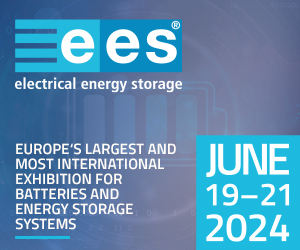How Can We Help?
About Wind – Grid Management
Grid management
Grid operators routinely control the supply of electricity by cycling generating plants on or off at different timescales. Most grids also have some degree of control over demand, through either demand management or load shedding. Management of either supply or demand has economic implications for suppliers, consumers and grid operators but is already widespread.
Variability of wind output creates a challenge to integrating high levels of wind into energy grids based on existing operating procedures. Critics of wind energy argue that methods to manage variability increase the total cost of wind energy production substantially at high levels of penetration, while supporters note that tools to manage variable energy sources already exist and are economical, given the other advantages of wind energy. Supporters note that the variability of the grid due to the failure of power stations themselves, or the sudden change of loads, exceeds the likely rate of change of even very large wind power penetrations.
There is no generally accepted ‘maximum’ level of wind penetration, and practical limitations will depend on the configuration of existing generating plants, pricing mechanisms, capacity for storage or demand management, and other factors.
A number of studies for various locations have indicated that up to 20% (stated as the proportion of wind nameplate capacity to peak energy demand) may be incorporated with minimal difficulty. These studies have generally been for locations with reasonable geographic diversity of wind; suitable generation profile (such as some degree of dispatchable energy and particularly hydropower with storage capacity); existing or contemplated demand management; and interconnection/links into a larger grid area allowing for import and export of electricity when needed. Beyond this level, there are few technical reasons why more wind power could not be incorporated, but the economic implications become more significant and other solutions may be preferred.
At present, very few locations have penetration of wind energy above 5%, and only Denmark is in the range of this 20% penetration level. Discussion about the feasibility of wind penetration beyond the level of 20% is, at present, largely theoretical.
Energy storage
One solution currently being piloted on wind farms is the use of rechargeable flow batteries as a rapid-response storage medium Vanadium redox flow batteries are currently installed at Huxley Hill wind farm (Australia), Tomari Wind Hills at Hokkaido (Japan), as well as in other non-wind farm applications. A further 12 MWh flow battery is to be installed at the Sorne Hill wind farm (Ireland). The supplier concerned is commissioning a production line to meet other anticipated orders.
An alternate solution is to use flywheel energy storage. This type of solution has been implemented by EDA in the Azores on the islands of Graciosa and Flores. This system uses a 18MWs flywheel to improve power quality and thus allow increased renewable energy usage.
V2G (Vehicle to Grid) offers another potential solution. In 2006, several companies (Altairnano, A123 Systems, Electrovaya) announced lithium batteries which could power future EVs (Electric Vehicles) and PHEVs (Plug-in Hybrid Electric Vehicles). A feature of these batteries is a high number of charge/discharge cycles per battery lifetime (Altairnano claim 15,000 cycles). By plugging thousands of cars to the grid when they are not in use (95% of the day on average), the electric car becomes an asset to the grid, rather than a drain only. Each participating vehicle would require upload as well as download capability. The vehicle owner would presumably be rewarded for energy uploaded at the market peak rate. Download (charging) would preferably take place during periods of excess wind (or solar) generation.
A chicken/egg problem exists in getting V2G off the ground. V2G capability would add to the cost of an already expensive electric car. Until such time as V2G cars are numerous enough to make the concept viable, there is no financial return on V2G investment. A successful launch of V2G will likely require government sponsorship of the startup period. World governments also have a role to play in regulating standard plugs and standard communication protocols between vehicles, billing aggregators and power utility companies. Without such standards, a repeat of the unfortunate situation which sees so many different plugs on appliances throughout the world could eventuate.







